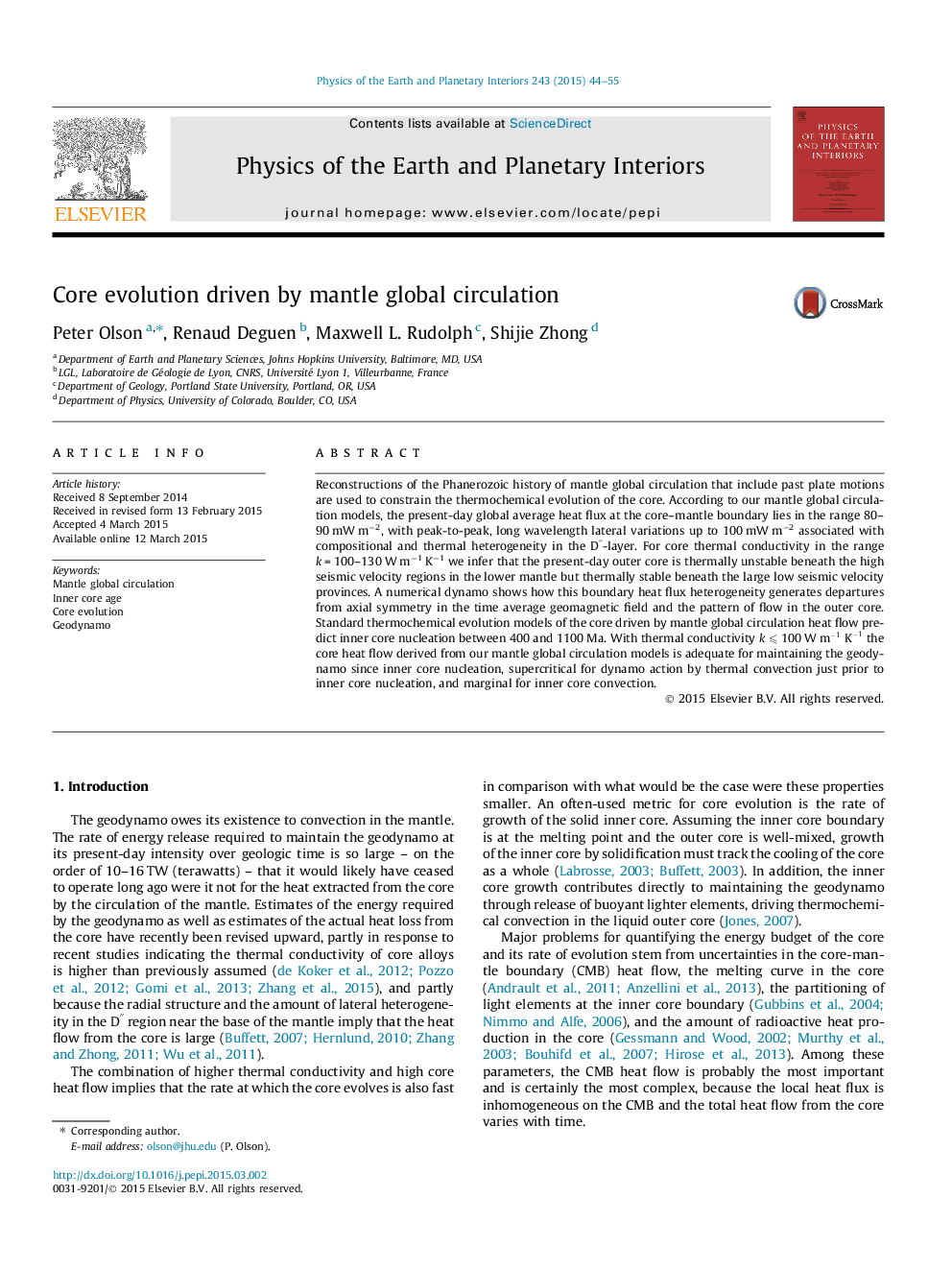| Article ID | Journal | Published Year | Pages | File Type |
|---|---|---|---|---|
| 4741380 | Physics of the Earth and Planetary Interiors | 2015 | 12 Pages |
Reconstructions of the Phanerozoic history of mantle global circulation that include past plate motions are used to constrain the thermochemical evolution of the core. According to our mantle global circulation models, the present-day global average heat flux at the core–mantle boundary lies in the range 80–90 mW m−2, with peak-to-peak, long wavelength lateral variations up to 100 mW m−2 associated with compositional and thermal heterogeneity in the D″-layer. For core thermal conductivity in the range k = 100–130 W m−1 K−1 we infer that the present-day outer core is thermally unstable beneath the high seismic velocity regions in the lower mantle but thermally stable beneath the large low seismic velocity provinces. A numerical dynamo shows how this boundary heat flux heterogeneity generates departures from axial symmetry in the time average geomagnetic field and the pattern of flow in the outer core. Standard thermochemical evolution models of the core driven by mantle global circulation heat flow predict inner core nucleation between 400 and 1100 Ma. With thermal conductivity k⩽100Wm-1K-1 the core heat flow derived from our mantle global circulation models is adequate for maintaining the geodynamo since inner core nucleation, supercritical for dynamo action by thermal convection just prior to inner core nucleation, and marginal for inner core convection.
